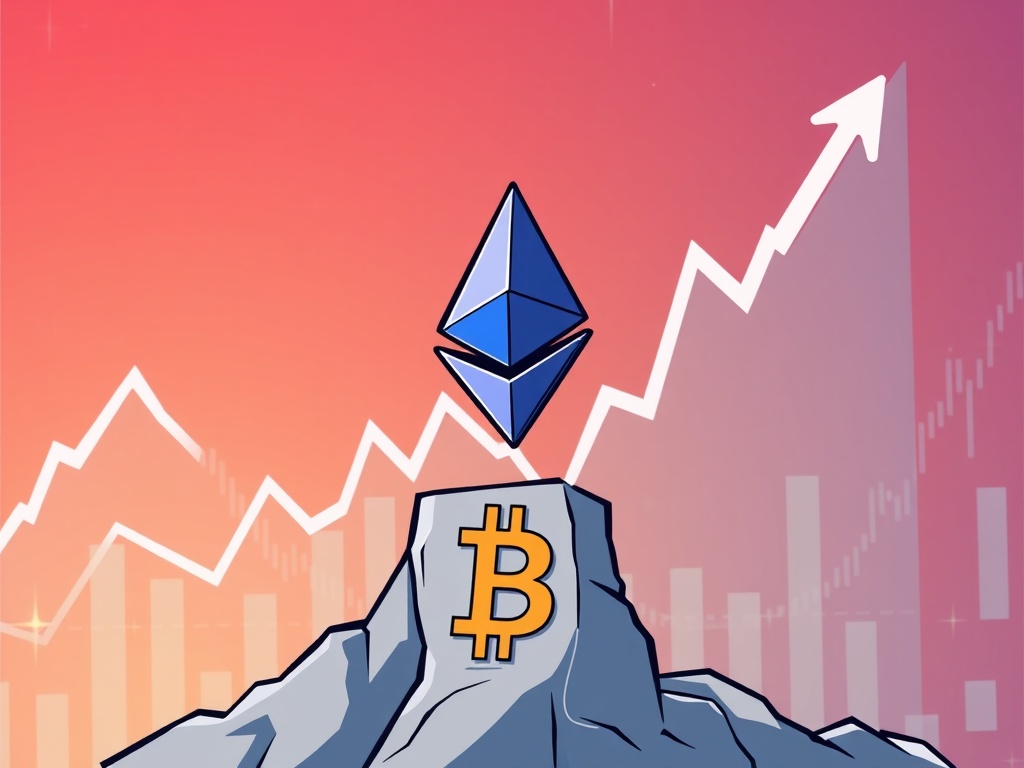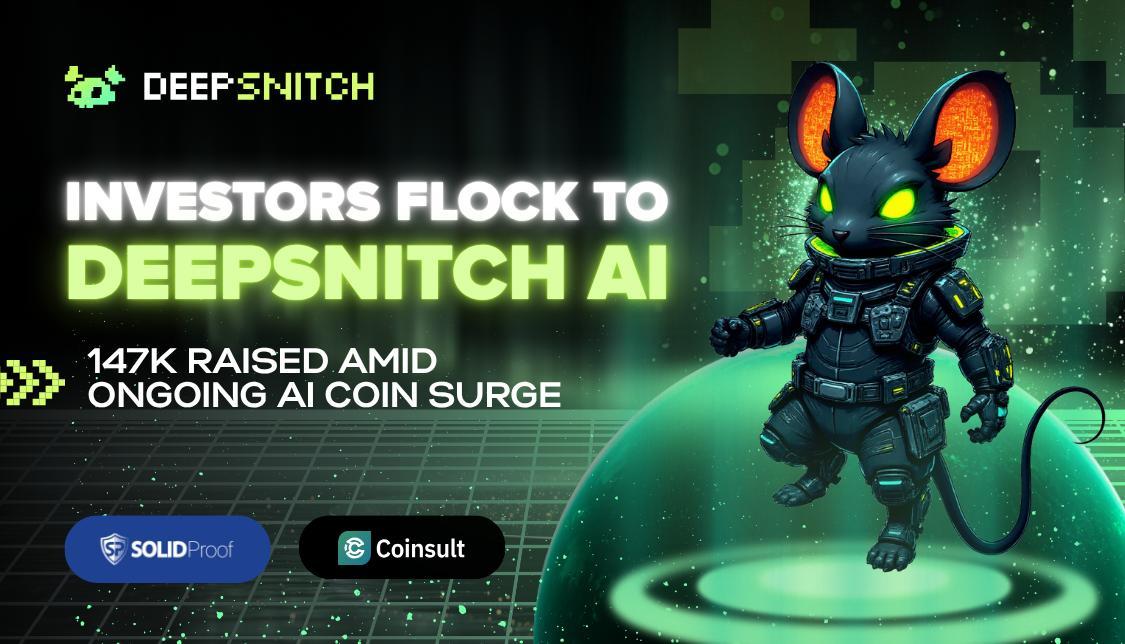BitcoinWorld

Pioneering Dogecoin Upgrade: Enabling Ethereum Bridge and ZK-Rollups
In the fast-paced world of cryptocurrency, where innovation is constant, Dogecoin, the beloved meme coin, is making headlines once again. This time, it’s not about a tweet or a celebrity endorsement, but a significant technical leap. Dogecoin developers have put forth a visionary proposal for a substantial Dogecoin upgrade, aiming to integrate zero-knowledge proof verification and enable seamless interoperability with the Ethereum network. This move could fundamentally reshape Dogecoin’s future, moving it beyond its payment-centric origins into the dynamic realms of DeFi, gaming, and identity applications.

What’s Driving This Revolutionary Dogecoin Upgrade?
For years, Dogecoin has thrived on its community spirit and simple utility as a digital currency for payments and tipping. However, the broader blockchain ecosystem has evolved rapidly, with decentralized finance (DeFi), non-fungible tokens (NFTs), and Web3 gaming becoming central to crypto innovation. Dogecoin, despite its popularity, has largely remained outside these burgeoning sectors due to its limited smart contract capabilities and scalability constraints.
The proposed Dogecoin upgrade addresses these limitations head-on. According to reports from The Block, the core idea is to introduce two powerful technologies: an Ethereum bridge and zero-knowledge (ZK) rollups. This isn’t just a minor tweak; it’s a strategic move to future-proof Dogecoin and expand its utility significantly. The developers recognize the need for Dogecoin to participate in the broader decentralized economy, leveraging Ethereum’s robust infrastructure while maintaining its unique identity.
Unpacking the Ethereum Bridge: A Gateway for Dogecoin
One of the most exciting aspects of this proposed Dogecoin upgrade is the plan to enable an Ethereum bridge. But what exactly does an Ethereum bridge entail, and why is it so crucial for Dogecoin?
An Ethereum bridge is essentially a connection that allows assets and data to move between the Dogecoin blockchain and the Ethereum blockchain. Think of it as a secure digital highway. Here’s why this is a game-changer:
- Interoperability: Dogecoin can finally interact with Ethereum’s vast ecosystem of decentralized applications (dApps). This means Doge holders could potentially use their tokens as collateral in DeFi lending protocols, participate in liquidity pools, or even purchase NFTs on Ethereum-based marketplaces.
- Access to Smart Contracts: While Dogecoin itself doesn’t support complex smart contracts, bridging to Ethereum grants it indirect access. Doge tokens, once bridged, could be wrapped into ERC-20 tokens (e.g., wDOGE) and then utilized within Ethereum’s programmable environment.
- Developer Opportunities: The bridge opens up new avenues for developers to build applications that incorporate Dogecoin’s large and active community, creating novel use cases that were previously impossible.
This integration could transform Dogecoin from a standalone payment coin into a more versatile digital asset, capable of participating in complex financial instruments and decentralized applications, significantly boosting its relevance and utility in the crypto space.
ZK-Rollups: Supercharging Dogecoin Transactions
Beyond the Ethereum bridge, the Dogecoin upgrade also includes the integration of zero-knowledge proof verification, specifically through ZK-rollups. This technology is a cornerstone of scalability solutions in the blockchain world, and its adoption by Dogecoin could be revolutionary for transaction efficiency.
So, what are ZK-rollups?
ZK-rollups are a Layer 2 scaling solution that bundles (or ‘rolls up’) thousands of off-chain transactions into a single transaction on the main blockchain. A cryptographic proof (the ‘zero-knowledge proof’) verifies the validity of all these bundled transactions without revealing the underlying data. This approach offers several key benefits:
- Massive Scalability: By processing transactions off-chain, ZK-rollups can significantly increase the throughput of the Dogecoin network, supporting thousands of transactions per second, far exceeding its current capacity.
- Reduced Fees: Consolidating multiple transactions into one mainnet transaction drastically lowers the per-transaction cost for users, making Dogecoin more economical for everyday use.
- Enhanced Privacy: While not fully private, zero-knowledge proofs offer a degree of privacy by allowing verification of transactions without revealing sensitive details.
- Improved Speed: Transactions processed via ZK-rollups can be confirmed much faster than traditional on-chain transactions, leading to a smoother user experience.
This technical enhancement would address one of the long-standing criticisms of Dogecoin – its scalability – paving the way for it to handle a much larger volume of activity, essential for its envisioned expansion into new application areas.
Beyond Payments: New Horizons for Dogecoin
The strategic intent behind this Dogecoin upgrade is clear: to diversify its utility beyond simple peer-to-peer payments. The proposal explicitly aims to position Dogecoin for participation in DeFi, gaming, and identity applications. Let’s explore what this could look like:
Decentralized Finance (DeFi)
With an Ethereum bridge, Dogecoin could become a significant player in DeFi. Imagine:
- Lending and Borrowing: Doge holders could deposit their tokens into protocols like Aave or Compound to earn interest, or use them as collateral to borrow other assets.
- Liquidity Provision: Providing Doge to decentralized exchanges (DEXs) like Uniswap or SushiSwap to earn trading fees, contributing to market liquidity.
- Yield Farming: Participating in complex strategies to maximize returns on Doge holdings within various DeFi protocols.
This would unlock immense financial opportunities for Dogecoin holders, integrating it into the backbone of the decentralized economy.
Gaming and NFTs
Blockchain gaming and NFTs are booming. A scalable Dogecoin with Ethereum interoperability could:
- In-Game Currency: Doge could be used as a native currency within blockchain games, facilitating in-game purchases, rewards, and trading of virtual assets.
- NFT Minting and Trading: While Dogecoin itself isn’t designed for NFTs, bridging to Ethereum would allow Doge to be used to mint or trade NFTs on platforms like OpenSea, potentially even creating Doge-themed NFT collections.
This would tap into the massive and growing market of digital collectibles and interactive entertainment.
Identity Applications
Decentralized identity (DID) is an emerging field that gives users more control over their personal data. While less immediately obvious, a robust, scalable Dogecoin could contribute to DID solutions by:
- Proof of Humanity/Ownership: Using Doge transactions as a verifiable timestamp or proof of a user’s activity on a blockchain, without revealing personal information.
- Micro-payments for Data Access: Facilitating small, frequent payments for accessing or verifying aspects of decentralized identity, leveraging ZK-rollups for efficiency.
This expansion would solidify Dogecoin’s position as a versatile and forward-thinking blockchain asset, moving it far beyond its initial ‘meme coin’ label.
What Are the Challenges and Considerations for This Dogecoin Upgrade?
While the proposed Dogecoin upgrade is incredibly promising, it’s essential to acknowledge the hurdles that lie ahead. Implementing such significant changes is no small feat:
- Technical Complexity: Integrating zero-knowledge proofs and building a secure, reliable Ethereum bridge requires highly specialized cryptographic and blockchain engineering expertise. Bugs or vulnerabilities could have severe consequences.
- Community Consensus: Dogecoin prides itself on its decentralized nature. Any major protocol change requires broad community buy-in from developers, miners, node operators, and the wider Dogecoin community. Achieving this consensus can be a lengthy process.
- Security Risks: Bridges, while powerful, have historically been targets for exploits. Ensuring the security of the Dogecoin-Ethereum bridge will be paramount to protect user funds and maintain trust. Robust auditing and continuous monitoring will be crucial.
- Competition: The blockchain space is highly competitive. Many other Layer 1 and Layer 2 solutions are also vying for market share in DeFi, gaming, and identity. Dogecoin will need to execute flawlessly to carve out its niche.
- Adoption and Integration: Even with the technology in place, convincing dApp developers, exchanges, and wallet providers to integrate and support the new capabilities will require significant outreach and ecosystem development.
Overcoming these challenges will require dedicated effort, transparent communication, and continued collaboration within the Dogecoin ecosystem.
The Future is Bright: Actionable Insights for Dogecoin Enthusiasts
For those interested in Dogecoin’s trajectory, this proposed Dogecoin upgrade signals a pivotal moment. It indicates a serious commitment from developers to evolve the network and unlock its full potential. While the proposal is still in its early stages, its implications are profound:
- Increased Utility: Dogecoin’s value proposition will extend far beyond just payments, making it a more versatile asset for a broader range of decentralized applications.
- Enhanced Scalability: The integration of ZK-rollups promises faster, cheaper transactions, making Dogecoin more practical for everyday use and high-volume applications.
- Stronger Ecosystem: Interoperability with Ethereum means Dogecoin can tap into the largest and most vibrant DeFi and dApp ecosystem, fostering new innovation and partnerships.
Keeping an eye on developer discussions, community forums, and official announcements will be key to staying informed as this exciting proposal progresses.
Conclusion: A New Era for Dogecoin?
The proposal for a significant Dogecoin upgrade, incorporating an Ethereum bridge and zk-rollups, marks a watershed moment for the cryptocurrency. It signals a strategic shift from a beloved meme coin to a serious contender in the broader decentralized economy. By addressing scalability and interoperability, Dogecoin developers are laying the groundwork for the coin to participate in the most innovative sectors of Web3, including DeFi, gaming, and identity. While challenges remain, the vision is clear: to empower Dogecoin with the tools it needs to thrive in a rapidly evolving blockchain landscape. This isn’t just an upgrade; it’s a bold declaration of Dogecoin’s ambition to secure its place as a foundational element of the decentralized future.
Frequently Asked Questions (FAQs)
Q1: What is the main goal of this proposed Dogecoin upgrade?
The primary goal of the proposed Dogecoin upgrade is to expand its utility beyond simple payments by enabling interoperability with Ethereum and improving transaction scalability through zero-knowledge rollups. This aims to allow Dogecoin to participate in DeFi, gaming, and identity applications.
Q2: How will an Ethereum bridge benefit Dogecoin?
An Ethereum bridge will allow Dogecoin to securely move between its native blockchain and the Ethereum network. This grants Dogecoin access to Ethereum’s vast ecosystem of decentralized applications (dApps), including DeFi protocols, NFT marketplaces, and Web3 games, thereby increasing its utility and potential use cases.
Q3: What are ZK-rollups and how do they impact Dogecoin?
ZK-rollups (Zero-Knowledge Rollups) are a Layer 2 scaling solution that bundles thousands of off-chain transactions into a single transaction on the main blockchain. For Dogecoin, this means significantly increased transaction speed, lower fees, and much higher throughput, enabling it to handle a greater volume of activity efficiently.
Q4: Will this Dogecoin upgrade change its status as a ‘meme coin’?
While Dogecoin’s ‘meme coin’ identity is deeply ingrained in its culture, this significant technical Dogecoin upgrade aims to enhance its fundamental utility and technical capabilities. By enabling Dogecoin to participate in advanced blockchain applications, it could gradually evolve its perception towards being a more serious and versatile blockchain asset, while hopefully retaining its fun community spirit.
Q5: What are the biggest challenges facing this Dogecoin upgrade?
Key challenges for the Dogecoin upgrade include the technical complexity of implementing secure bridges and ZK-rollups, achieving broad community consensus among Dogecoin stakeholders, ensuring robust security against potential exploits, and effectively competing with existing blockchain solutions for developer and user adoption.
Q6: When is this Dogecoin upgrade expected to happen?
As of now, this is a proposed Dogecoin upgrade. Specific timelines for development, testing, and implementation are not yet set and will depend on developer progress, community feedback, and successful technical execution. It’s a long-term vision rather than an immediate deployment.
If you found this article insightful, consider sharing it with your network! Your support helps us continue to provide valuable insights into the world of cryptocurrency and blockchain innovation. Share this article on Twitter, Facebook, or LinkedIn to spread the word about the exciting future of Dogecoin!
To learn more about the latest crypto market trends, explore our article on key developments shaping blockchain technology adoption.
This post Pioneering Dogecoin Upgrade: Enabling Ethereum Bridge and ZK-Rollups first appeared on BitcoinWorld and is written by Editorial Team





